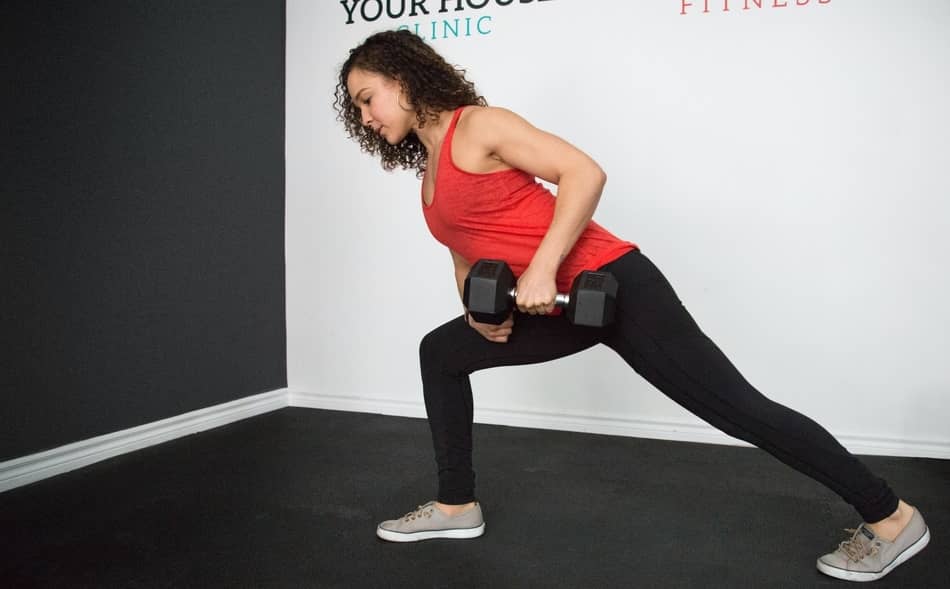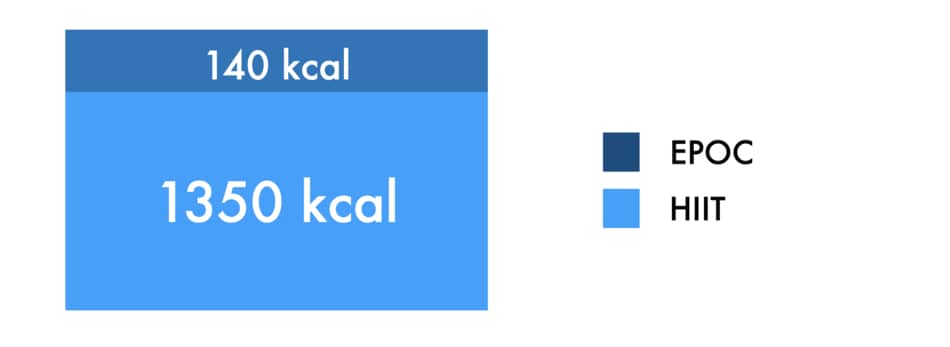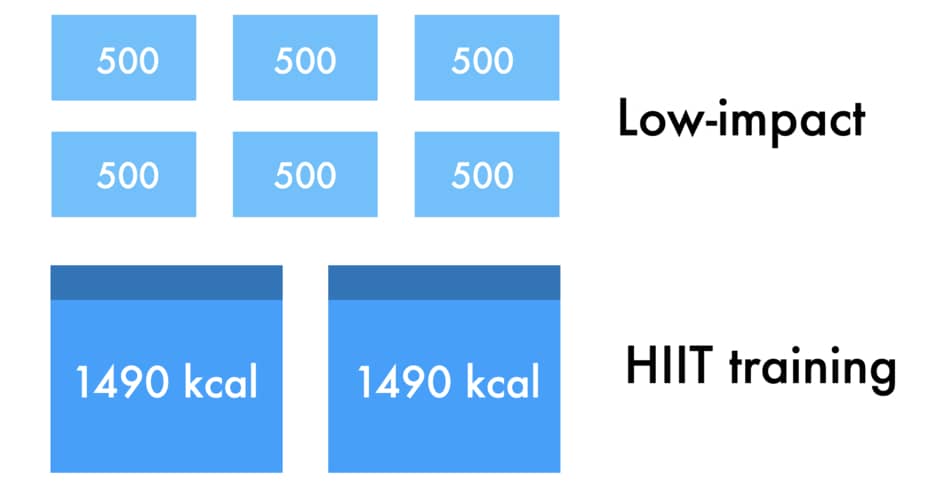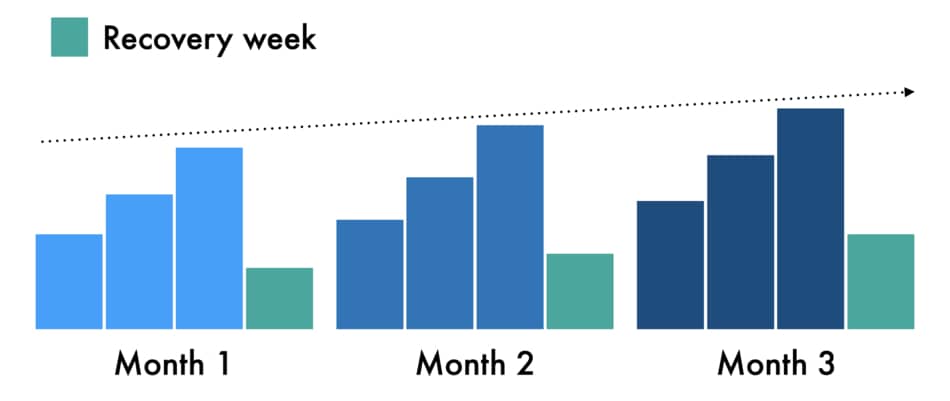One of the most important things you can do to achieve results, and (most importantly) maintain them is to know how to create your own fitness workout plan.
Today I will show you how you can create a peloton weekly workout plan that makes you want to run to your bike and try it out.

The peloton has several programs, classes, and challenges, but it does not have weekly workout plans that apply periodization in the terms of weeks or even months.
According to experts, periodized training plans help to maximize your performance and delivered better effects, compared to non-periodized training plans.
In other words, following a structured workout plan increases the potential to reach your performance goals while minimizing the potential for overtraining.
Overview
Having a structured workout plan with the right training frequency and logical class selection is important not only for fat loss but also to improve performance and speed up your recovery capacity.
Tyler D. Williams, Ph.D., a human performance expert, said that following a workout plan helps to achieve better performance and body composition results, compared to doing random exercises without a plan.
In his meta-analysis that included 18 studies published between 1988 and 2015, Dr. Willimas concluded that the “magnitude of improvement following periodized resistance training was greater than non-periodized resistance training“.
A good peloton weekly workout plan should include:
- A large variety of classes (strength, cardio, and mobility.
- Sufficient recovery time (that includes detraining periods).
The peloton doesn’t have an easy-to-follow workout plan
One thing I don’t like about the peloton content is they do not teach you how to create your own workout plan.
- They offers many single workouts that range in many fitness genres.
- They also have over 30 different programs that last 1 to 6 weeks (on average).
- However, there are no guides on what to do after you complete those programs.
No problem.
I’m going to go ahead and explain to you the foundation template that you can customize based on your personal goals, whether that’s weight loss or building muscle.
What is a good weekly workout schedule? In general, a good weekly workout schedule should include a variety of peloton classes that allows you to hit different muscle groups, have some time to relax, and also develop a habit of exercise. The last one is especially important for beginners.
How To Build a Peloton Workout Plan
Choosing random mish-mash classes won’t get you far.
The good news is that Peloton has a wide variety of options you can apply to design a custom-tailored routine.
- It has great quality content with classes that range from general workouts to very specific and goal-oriented sessions.
- The workouts focus on strengthening your core, increasing your VO2 max, running the first 5k, or even running the whole marathon.
To build a good peloton workout program you should include a variety of classes that recruit all of the muscle groups in your body.
You also should take into account your training age, workout experience, and range of motion.
Here are the 7 principles on how to build a peloton workout plan for weight loss.
#1 Keep your intensity low
As a whole, the best peloton workout plan for weight loss should include strength training to maximize muscle protein synthesis and low-impact rides for optimal fat oxidation.
Doing cardio at low intensity allows you to maintain high training frequency, without overtraining.
There is time and place for training hard with maximum effort.
However, in most cases, you will have a much better outcome by reducing your intensity and focusing on low-intensity workouts.
According to Dr. Peter Attia, the Canadian-American physician, and expert in longevity, you get the most longevity benefits from keeping the majority of your cardiovascular workouts around zone 2, which is just under the lactate threshold.
On the other hand, the optimal frequency for HIIT workouts where you reach your VO2 max (anaerobic threshold) is one session per week.
This helps to enhance recovery and allows you to stay consistent.
Peloton HIIT vs low-impact
As a whole, the peloton low-impact rides and HIIT rides are both effective for weight loss.
However, low-impact rides don’t fatigue the body as much as high-intensity interval training.
This way you can train 5-6 days per week, burn more fat, and feel energized, instead of crushed.
Of course, peloton HIIT training is very effective for weight loss because it burns more calories in a shorter time, which makes it time-efficient.
Also, doing short sprint intervals at a high effort level, followed by sufficient recovery time helps to elevate EPOC.
EPOC stands for excess post-exercise oxygen consumption.
It is an increase in metabolic rate and calorie expenditure after high-intensity work due to oxygen debt.
Studies have shown that 80 minutes of HIIT training at 80% of maximum heart rate elevated EPOC for 7 hours (LaForgia et al. 2006).
However, the same research has identified that “the EPOC comprises only 6-15% of the net total oxygen cost of the exercise“.
Doing HIIT for 80 minutes at an 80% maximum heart rate is equivalent to burning around 1350 kcal. This means that the EPOC effect of 7 hours is equivalent to only 140 calories burned extra.
Take a look at the graph below.

This may sound like great news.
However, please keep in mind that 80 minutes of HIIT training you cannot do every day because your body needs time to recover. Not even every other day.
On the other hand, if you do low-impact rides combined with strength and recovery classes, not only does it burn a comparable amount of calories but also puts less stress on the body.
Also, doing daily aerobic training is more realistic for beginners, it helps to build exercise habits, and makes workouts more doable.
Plus, studies have shown that more intensity is linked to greater hunger. This means the more exhausting your workouts are, the more likely you will get hungry (Afrasyabi et al. 2019).
So if you take it into perspective from the weekly training plan for weight loss, you get more benefits from reducing the intensity and prioritizing low-impact and recovery rides with higher frequency because it doesn’t fatigue the body.

NOTE: High-intensity classes still are viable weight loss workouts, especially for people who have limited time. If your schedule allows you only for a 20-minute session per day, you can choose HIIT or Tabata rides.
#2 Train your weakness
If you want to build a well-balanced physique, you have to give your lagging body parts extra love.
Work on your weaker and less developed muscle groups earlier in the week because that’s when you’re stronger.
My biggest weakness was a core strength because I always found some excuse not to do it.
Over time, not only my belly fat stood out like a sore thumb, but I also developed some back pain issues.
Peloton has many body parts split classes that work on specific muscle groups.
| Peloton class | What’s good for? |
|---|---|
| Chest and Back Strength | Upper body (chest, shoulders, back, and arms) |
| Arms and Shoulders Strength | Upper body (shoulders, biceps, and triceps) |
| Glutes and Legs | Lower body (glutes, hamstrings, quadriceps) |
| Core | Abdominals (obliques, rectus abdominis, low back) |
| Yoga Focus Flow | Flexibility and mobility |
Next, see how you can add those classes to make up your customized workout schedule.
Here is the sample peloton weekly workout plan for fat loss.
| Day of the week | Peloton class |
|---|---|
| Monday | 20 min Strength class + 20 min Recovery Ride |
| Tuesday | 45 minutes Low-impact Ride |
| Wednesday | 20 min Full Body Strength + 20 min Recovery Ride |
| Thursday | 45 minutes Power Zone Endurance Ride |
| Friday | 20 min Outdoor Power Walk |
| Saturday | 20 min Strength class |
| Sunday | 20 min Restorative Yoga |
As you can see, on Monday and Saturday I included “strength class”, which is where you want to add your peloton strength class of choice, based on your weakness.
If your goal is to build better glutes, prioritize your workout schedule to add glute-oriented strength classes in those spots.
If your goal is to work on your core, simply add 1-2 core sessions.
In general, training your weak body parts involves doing the classes that you don’t normally do, or don’t enjoy doing.
#3 Apply progressive overload
Progressive overload is a basic principle of periodization.
It means doing more work overtime.
It doesn’t mean training as hard as you can.
It means starting where you’re at the moment and gradually increasing your training volume.
Overall, progressive overload is important in peloton training plans because it elicits gains in strength and power output systematically and logically.
It also allows us to continue seeing training adaptations and prevent workout plateaus.
There are several ways to implement progressive overload in your peloton training plan.
| Adding more classes within one week Adding more classes within one day Reducing the amount of rest days Doing the same classes with better form and less effort Using heavier weights or bands for strength classes Doing longer duration classes with the same intensity Doing the same duration classes with higher intensity |
Keep in mind that you should be chasing better performance each week.
However, the improvement doesn’t have to be significant.
For example, doing a 10-minute ride instead of a 5-minute ride, or doing an intermediate class instead of a beginner class.
Also, add progressive overload to one class at a time each week.
This means if you do 9 peloton classes per week and you choose one to progress, leave the rest 8 at the baseline.
Here is an example of how to add progressive overload to your weekly peloton training plan.
| Day of the week | Peloton class |
|---|---|
| Monday | 20 min Glutes and Legs + 20 min Recovery Ride |
| Tuesday | 30 minutes Power Zone Endurance Ride |
| Wednesday | 30 min Full Body Bootcamp + 20 min Recovery Ride |
| Thursday | 45 minutes Low-impact ride |
| Friday | 20 min Outdoor Power Walk |
| Saturday | 20 min Chest and Back |
| Sunday | 10 min Relaxing Meditation |
What I always recommend to my clients is to take a step back and make a self-assessment on which classes were the hardest, and which class was the easiest (excluding recovery yoga or meditation).
For example, if you find that 30 minutes of Power Zone Endurance Ride from Tuesday was the easiest one, that’s the class you want to progress for the next week.
See below the example for week 2.
| Day of the week | Peloton class |
|---|---|
| Monday | 20 min Glutes and Legs + 20 min Recovery Ride |
| Tuesday | 45 minutes Power Zone Endurance Ride |
| Wednesday | 30 min Full Body Bootcamp + 20 min Recovery Ride |
| Thursday | 45 minutes Low-impact ride |
| Friday | 20 min Outdoor Power Walk |
| Saturday | 20 min Chest and Back |
| Sunday | 10 min Relaxing Meditation |
As you can see, the only class that changed was the Power Zone Endurance ride from 30 to 45 minutes. The rest of your workouts remain the same.
NOTE: You don’t have to add more intensity every week. Once you get to the point where all classes seem to be hard, don’t add more progression. Just continue at this pace until it gets easier.
Another way to progress in your peloton training plan is to change the class category from easier to harder.
See the example below.
| Easier class | Harder class |
|---|---|
| Bodyweight Strength | Full Body Strength (with weights) |
| Power Walk | Walk + Run |
| Full Body Strength (with weights) | Full Body Bootcamp (bodyweight) |
| Full Body Stretch | Yoga Flow |
| HIIT Ride | Tabata Ride |
As you can see, going across the categories allows you to maintain variety and keeps the workouts interesting.
#4 Have a recovery week
Recovery week is similar to tapering in marathon training.
However, tapering is about stopping the exercise for a week or two before a competition.
The recovery week is about reducing the intensity and/or training volume by 40-60% once every 4-5 weeks.
Studies have shown that the tapering program “was found to be an effective periodization strategy to increase muscle power and acceleration and to reduce stress perception” (Beltran-Valls et al. 2020).
Is recovery week important?
Yes, the recovery week is important in a peloton training plan because it allows the body to improve muscular strength, reduce stress and fully recover from the workouts.
It also allows focusing on other recovery measures like hydration and nutrition.
Also, I always like to take a step back and make sure my sleep is in check.
Recovery week is a perfect time to make up for all the busy nights and early mornings.
Here is an example of recovery week in the peloton training plan.

As you can see in the graph above, the overall training volume goes up month after month.
However, the last week you significantly reduce the pace.
You can use recovery week by either reducing the class duration or overall difficulty level.
During my recovery week, I like to keep the duration no longer than 20 minutes and the intensity fairly easy.
I also like to experiment with other types of classes like dance, pilates, light yoga, or doing something completely unrelated to the peloton like hiking outdoors.
#5 Focus on one thing at the time
It is possible to get stronger, leaner, and faster simultaneously from one training program.
However, focusing on one goal at a time will help you get much faster results because you can adjust your training type, volume, and nutrition accordingly.
For example, if you train for a marathon or triathlon, you should avoid fat-loss diets because these types of training plans require a lot of training volume and a higher calorie intake to maintain that effort.
On the other hand, if you want to lose weight, you have to be in a calorie deficit.
This means your energy intake has to be lower than your energy expenditure.
You can learn more about how to combine diet and peloton in my article here.
#6 Include mobility training
Mobility workouts are important in a peloton training plan because they allow you for better movement quality, correct posture, and fewer muscle tensions.
It also allows for faster recovery. Peloton has hundreds of classes like yoga, stretch, and foam rolling.
Please remember that peloton also offers many yoga tutorials, especially for beginners.
This means that even if you haven’t done the classes before, you can spend a few days practicing, without going to the in-person studio.
Here are the best mobility classes from the peloton you should consider.
| Foam Rolling Full Body Stretch Meditation Breathwork Restorative Yoga Yoga Anywhere Power Yoga Yoga Flow |
Most of those classes take 5 to 15 minutes so you can do them straight after each workout.
Doing some mobility after a workout helps to kick start parasympathetic response (also called rest and digest), lower cortisol levels and reduce blood pressure.
It’s calming and relaxing.
#7 Have realistic expectations
Focus on performance, not on body composition. It’s gonna take 12 to 16 weeks to see any weight loss results. This can feel discouraging for most people.
Especially if you haven’t done this before, it may feel like you’re doing the work, but have no results to show it for.
However, tracking your performance metrics, peloton streaks, badges, and PRs increases intrinsic motivation. Change isn’t an event, is a process.
And everything is hard before it gets easy. But you can make things a little bit more manageable to break through the resistance.
Conclusion
- Peloton classes are worth it and can be used in a variety of ways.
- However, if you want to get to the next level, you should start focusing on long-term periodization.
- This will help you not only reduce excess weight but also plan, manage your time better, and remember to include everything that matters.
- The last thing you need to hear is that there is no perfect training program. This means that you should not do the same thing for more than 3-6 months.
- This also means you have to learn how to listen to your body and think for yourself.

This is one of the best articles on using a Peloton workout plan to reach your goals. I don’t understand why peloton has nothing in place however I’m grateful for coming across this article. And I also look forward to putting this into practice.
Thank you so much for putting this post and workout plans for Peloton together! The choice of classes for Peloton is overwhelming and once you’re done with the beginner collection there isn’t much to guide you. I am so happy to have found this post!
Wow!! Thank you so much. Wonderful article about peloton workout plan and the best help in figuring out an exercise routine.
You welcome